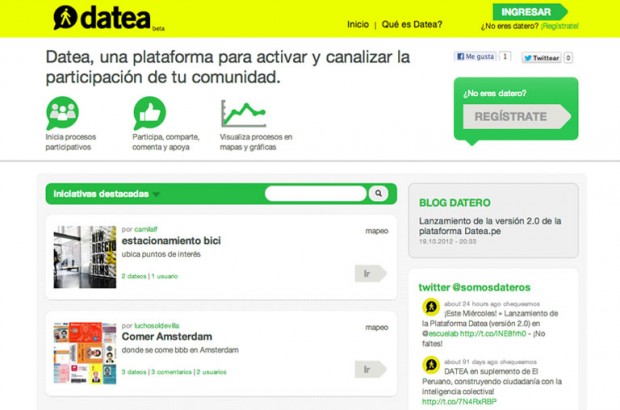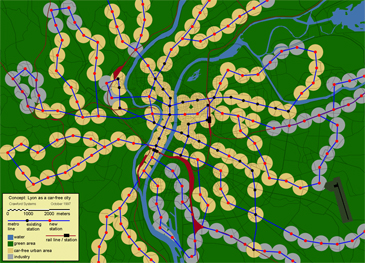
Photo gently borrowed from mcfarlandmo, under a attribution-non-commercial creative commons license
Remember Bikeline, our awarded idea for a cycling app? We’ve been thinking about it lately, and decided to make a post about some other smartphone apps that might be interesting for urban cyclists.
You may have already heard of names like CityMapper, Strava or CycleMeter. It seems like most of the cycling related apps available fall on the category of route planners, sports or trackers. So we decided to talk about other types of apps, both available or soon-to-be lauched.
BikeRepair
Every person that rides a bike knows that some mechanic skills will eventually come in handy. This app will teach you all you need to know about maintenance and repairing of your bicycle. It consists in 58 step-by-step guides and 95 tips and tricks, also about riding-related aches and pains. One important thing: all of these repairs don’t require special tools; in other words, it’s accessible to beginner cyclists.

Platform: iOS
Price: 2.26€ / 3.20€
Website: www.bikerepairapp.com
Fill That Hole
Even if this app is only available in the UK, it had to be part of this list because it emphasizes the importance of public participation and collaboration for a better city. This app, developed by the National Cycling Charity, enables you to take photos of potholes (one of the worst enemies for a cyclist) and other hazards in the street, and uses the phone GPS location to send the info to the local authorities. A FixMyStreet for bicycles!
Platform: iOS, Android in development
Price: Free
Website: www.fillthathole.org.uk
RiderState
This app is a game that motivates you to ride your bicycle even more. In RiderState you’ll be conquering your street, neighborhood and city, based on how much and where you’re riding. The app will register your activity in real-time, and when you’re finished it will show a map of your conquered territory as well as stats of your game and ride, like the avoided CO2 emissions. Interesting take on mobility and gamification.
Platform: iOS Android
Price: free
Website: www.riderstate.com
Bike Tap
BikeTap was born from the effort to change the way people view cycling as part of their lifestyle, from recreational to social. It’s based on social interaction and basically you gain points and rewards by each trip you’re making by bike. You can challenge your friends for bike rides, arrange a meeting with them, know if they are going by bike or if the destination has parking infrastructures. Local businesses will be able notify users, and you can also know about trends in cycling. With this app you will find additional motivation through shared experience to get you cycling more often.
Platform: iOS (not lauched yet)
Price: Unknown
Website: www.vimeo.com/urbanfuturists
Kappo
While Kappo also means to encourage cycling by gaming, it is an interesting tool for institutions and governments as well. The concept is basically the same as the previous, everytime you ride your bike the app measures the time, speed and also weather and jumps. If it’s raining, for example, you’ll be getting more points to level up and more bikecoins to use on your profile. The graphics are very appealing and the game looks entertaining; you can compete with your friends, players from all around the world and also complete some very interesting challenging achievements.

kappo achievements, profile and results pages
The most interesting part of Kappo is that, while it is a game for the users, it also provides data for the local authorities. They will get insights about local urban cyclists, being able to understand patterns and behavior, in order to act better towards their needs. A very interesting win-win model, with a (yet to be fully explored) potential around the ‘bikecoin’ concept.

kappo cycling heatmap. from analytics page
Platform: iOS Android
Price: free
Website: www.kappo.bike
Bikestorming
The first thing we must say about this app concept is that the creator wants to make bike the most popular transportation mode by 2030. Bold statement! The second thing is that it’s all open-based. Bikestorming is (or will be) a collaborative platform intended to promote urban cycling everywhere.

Different pages of bikestorming app
It’s designed to be fun and cool. Basically there is a Map and Missions. The Map shows more info available for urban cyclists than any other map, and the missions are a way to expand it. In other words, beside using the info of your city, you will also be posting about parking spots, safe streets or how do you integrate bike and public transport, among other missions. All the data is open to reuse.

Platform: Soon to be on every smartphone and lightsaber
Price: Free
Website: www.bikestorming.org
Conclusion
Bikes have remained mostly the same during decades, but contemporary technology is slowly finding its way on everyone’s handlebar, with great potential. Apart of the visual aid and information that such apps can provide, there are also some interesting explorations of a sharing economy going on here. The mix of social coins, gamification, social interaction and crowdsourcing of urban data is a very promising one.
There are some limitations, though. For example, enabling your GPS (required for almost every biking app) while you ride may take you to your destination… and leave you with an empty battery. As these applications get more popular, systems for in-bike charging will probably be popping up, as well as more and better ways to attach the phone to your bike.
This is just the beginning!












